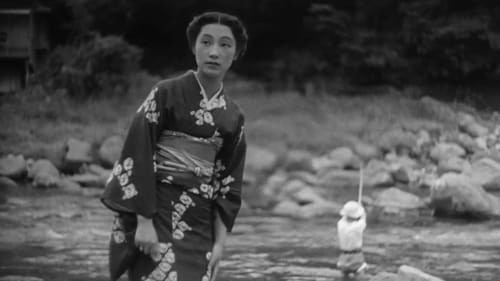
Production Design
Hiroshima, 1959. Uma atriz francesa casada (Emmanuelle Riva) veio de Paris para trabalhar num filme sobre a paz. Ela tem um affair com um arquiteto japonês (Eiji Okada) também casado, cuja esposa está viajando. Nos dois dias que passam juntos várias lembranças vêem à tona enquanto esperam, de forma aflita, a hora da partida dela. Ela conta que foi "tosquiada", pois se apaixonou por um alemão (Bernard Fresson) quando tinha apenas 18 anos e morava em Nevers, sendo libertada no dia em que seu amor foi morto, já no final da 2ª Guerra Mundial. Por ter amado um inimigo ela foi aprisionada por sua família numa fria e escura adega e agora, 14 anos depois, novamente sente o gosto de viver um amor quase impossível.

Production Design
A period film about a peasant revolt in the region near Mount Fuji, occasioned by high officials' depriving the farmers of their water rights.

Art Direction
The Angry Street includes a great deal of location shooting in the rebuilt city, including downtown streets, residential neighborhoods, the campus of the University of Tokyo, and the high life of jazzy dance halls. Sudo (Hara Yasumi) and Mori (Uno Jukichi) are two university students who make money by picking up rich girls in dance clubs and conning them into giving them cash. Mori is the brains of the operation, and Sudo is the suave dancer who picks up the girls. Over the course of the film, Sudo becomes involved with three different girls and is drawn into the gangster milieu, which he seems unable to resist even though he is responsible for his mother, grandmother, and sister, Masako (Wakayama Setsuko). In this world of bad boys and girls, Masako is the pillar of strength and moral virtue who finally enables Mori to straighten out.

Art Direction
Based on the true story of a 17-year old Atayal girl called Sayun Hayun from Nan'oku village, Giran district, Taihoku Prefecture (in current Taiwan) who went missing and was thought to have drowned whilst helping carry the luggage of her teacher Masaki Takita during a storm in 1938.

Art Direction
A nurse's tale of self-sacrifice during wartime. The title is borrowed from a patriotic song made popular by singer Hamako Watanabe during the Second Sino-Japanese War.

Art Direction

Art Direction
A city boy moves to the countryside and the kids there pick on him.

Art Direction
Uta’s mother died when she was six years old; her father she never met. She was forced to adopt a traveller’s life when her grandmother died, and now she is a dancer and part of a family of actors who travel from town to town, setting up street performances. A way of escape from this marginal existence arises when she gets the chance to move to tea merchant Hiramatsu’s place, where she is asked to teach his daughter to dance.

Production Design
A spirited young teacher challenges the conservative school employing her with liberal thinking and teaching methods.

Art Direction
Two childhood friends go their own ways but meet again some years later after they have both married. They get re-acquainted, meet each others’ families, and all is well. Then the disagreements start...

Production Design
A pair of blind masseurs, an enigmatic city woman, a lonely man and his ill-behaved nephew—The Masseurs and a Woman is made up of crisscrossing miniature studies of love and family at a remote resort in the mountains. With delicate and surprising humor, Hiroshi Shimizu paints a timeless portrait of loneliness and the human need to connect.

Production Design
On vacation's eve, a boy is sent to the countryside to live with his uncle after his father is imprisoned and accused of embezzlement.

Set Decoration
During college military training exercises, the bond between two friends and athletic rivals is tested when one of them becomes involved with a woman who may be a prostitute.









